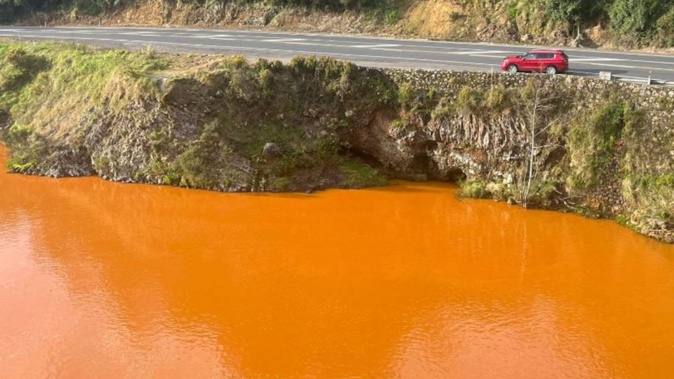
An old mining shaft has been confirmed as the cause behind turning the Ohinemuri River bright orange yesterday, the Waikato Regional Council says.
Regional compliance manager Patrick Lynch said the sediment appeared to have been shifted from an old mining asset in the hills above the Karangahake Gorge carpark, and the flow of water coming from the shaft was now running relatively clear.
The water was flowing into “what appears to be dug, maybe a hand-dug, tool-dug channel, which goes down”, he said.
While there was still sediment in calmer locations in the river or around rocks, most of it had been flushed through the system, said Lynch.
“The settled sediment may be present and visible for some time, and we still advise caution as we do not know yet what it contains.”
Council staff have again taken water samples upstream and downstream as well as more samples of the settled sediment.
“We only know what might be in sediment in an old mine shaft and it will be some days until we get the results back so we know what is actually in this sediment,” said Lynch.
“The colour indicates it will be iron-related, but it is likely to be highly acidic so again we advise people to treat it as contaminated and not touch it.”
Sample results could take up to 10 days.
Substances found in old mine assets could include residual arsenic and heavy metals such as cadmium, chromium and antimony, which could cause health risks.
“We are testing for these heavy metals, and also mercury, both totals and dissolved,” said Lynch.
“We really want to understand how this event happened and that investigation will take time. It’s also one of those situations where we are relying on mother nature - a rain event - to wash the contaminant away. The more water it’s exposed to, the more diluted it will get.”
Efforts were being made to understand what the effects might be on the river and the Firth of Thames.
Lynch said a plane was being used to see if a sediment plume was apparent in the Firth of Thames, or whether it had dissipated.
The plume was expected to reach the ocean in the Firth of Thames by 10am Saturday.
- RNZ
Take your Radio, Podcasts and Music with you









